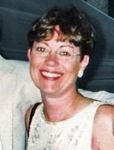Marc Goldberg – Life Master
When I began taking bridge lessons a little over 5 years ago, my objective was to learn enough to be able to play a competent game with my wife, Suzie, who is an accomplished bridge player. Life Master, or any ACBL rank for that matter, seemed way out of reach. Through the help of patient and talented bridge teachers and mentors, and dedicated study with my partners (we started out as a cohort of newbies intent on learning how to play bridge), my game improved to the point where I could do well in local, sectional, and regional events.
Getting newer players to that point where they are confident in competing is a key to helping them progress through the various ACBL levels. It is long and daunting road to Life Master status, especially for those of us in the new 500 MP category.
At a little over 400 master points, and still needing 16 more in gold, my wife and I participated in an ACBL regional at sea along with our friends (also accomplished bridge players) Bill Young and Debbie Hoveland. We had a phenomenal experience- we played pairs and teams in 19 out of the 21 sessions during the cruise. I was hoping to make a big dent in the gold points that I still needed, but our success vastly exceeded any expectation that I had. Our week at sea added 62 master points to my total, with 58 of them being gold. I was absolutely thrilled when Larry Cohen presented me with a trophy for the highest “B” player of the tournament. Within a few months of our return, I was able to get to the magic number of 500 at one of our local club games. The lesson from my experience is that no one makes Life Master on their own. Anyone who achieves that level only gets there with the help and guidance from more experienced players, just as I had help from Bill and Debbie, Suzie, and many others.
Life Master is a significant accomplishment for any player. To me, it is more of a beginning point than a destination. Life Master says someone has learned how to play bridge and has competed successfully in local, sectional, and regional events. But, in reality, this is where you begin to learn how to play bridge at an advanced level. In athletic terms, you have made the varsity team, and now you must learn how to play at the varsity level.
Bridge is a fascinating game that requires a complex mix of skill, knowledge, and judgement. In most endeavors, the more you know about a game, the easier it is. With bridge, the opposite occurs. The more you know, the more you realize how difficult and complicated the game can be trying to figure out the billions and billions of hands that you pick up at the table. Two hands can look nearly identical, but the path that succeeds with the first may fail with the second. Figuring that out is the challenge that keeps people playing.
While I love playing bridge, my real passion is teaching the game. As a student, I learned the rules and procedures for bidding, play, and defense, but I also tried to understand the reasons behind them so I could better judge what to do in unusual or undefined situations. As a bridge teacher, I enjoy helping my students appreciate bridge by giving them a better understanding of the “why” behind the rule, rather than just following the rule. Lately, it has become bitter-sweet when I play against two of my students at a club game and they get the good board scores (because they learned something in my class or workshop).


